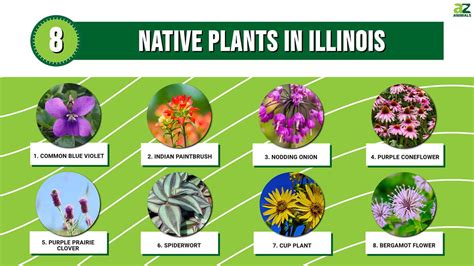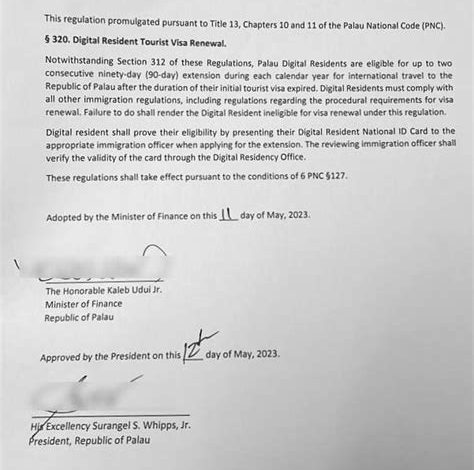Introduction
Illinois, renowned for its picturesque landscapes, boasts a diverse array of native flora that captivates the senses with its vibrant hues and graceful forms. From the prairies to the woodlands and along the banks of rivers, wildflowers paint the land in a kaleidoscope of colors, inviting nature enthusiasts and photographers alike to explore their beauty. This comprehensive guide unveils the enchanting world of frank and bright flora in Illinois, providing an in-depth exploration of their characteristics, habitats, and ecological significance.

A Tapestry of Colors and Forms
Prairie Beauties
The Illinois prairies, once vast and majestic, serve as the natural canvas for a breathtaking array of wildflowers. Among the most iconic is the blazing star (Liatris pycnostachya), its towering spikes adorned with vibrant purple florets that dance in the breeze. The yellow coneflower (Echinacea paradoxa) adds a cheerful touch, its daisy-like blooms attracting pollinators from afar. The purple prairie clover (Dalea purpurea) and the showy tickseed (Coreopsis grandiflora) further enhance the prairie’s vibrant tapestry, their delicate flowers adding an intricate beauty to the landscape.
Woodland Wonders
The woodlands of Illinois offer a sanctuary for shade-loving wildflowers that bloom throughout the seasons. The early spring ephemerals, such as bloodroot (Sanguinaria canadensis) and Dutchman’s breeches (Dicentra cucullaria), emerge from the forest floor, signaling the arrival of warmer days. As spring progresses, the woodland floor transforms into a sea of bluebells (Mertensia virginica) and yellow trout lilies (Erythronium americanum), their delicate blooms creating a breathtaking carpet of color. The graceful wood anemone (Anemone quinquefolia) and the nodding trillium (Trillium cernuum) add an ethereal touch to the woodland understory, completing the harmonious symphony of spring wildflowers.
Aquatic Delights
The rivers and wetlands of Illinois provide a haven for aquatic flora, which thrives in the moist and nutrient-rich environment. The vibrant pickerelweed (Pontederia cordata) graces the water’s edge with its elegant blue spikes, while the fragrant water lilies (Nymphaea spp.) float serenely on the surface, their lily pads casting intricate patterns on the water. The yellow floating heart (Nymphoides peltata) adds a splash of sunshine, its heart-shaped leaves and bright yellow flowers forming a cheerful mosaic on the water’s surface. The marsh marigold (Caltha palustris) and purple loosestrife (Lythrum salicaria) further enhance the aquatic landscape, their vibrant blooms adding a touch of whimsy to the wetlands.
Ecological Significance
The diverse flora of Illinois plays a pivotal role in maintaining the ecological equilibrium of the state’s ecosystems. Wildflowers provide essential nectar and pollen sources for a wide variety of pollinators, including bees, butterflies, and hummingbirds, which are crucial for the reproduction of plants and the survival of numerous animal species. The intricate root systems of wildflowers anchor the soil, preventing erosion and safeguarding water quality. Furthermore, these plants serve as natural filters, absorbing pollutants and purifying the air and water.
Threats and Conservation
Despite their beauty and ecological value, the native flora of Illinois faces numerous threats, including habitat loss, invasive species, climate change, and pollution. Urban sprawl and agricultural practices have fragmented and destroyed natural habitats, while invasive species from other regions compete for resources and displace native plants. Climate change is altering weather patterns, leading to changes in plant growth and flowering times. Pollution from industrial activities and agricultural runoff can also harm wildflowers and disrupt their ecosystems.
To safeguard the future of Illinois’s native flora, conservation efforts are essential. Preserving and restoring natural habitats through land acquisition and management practices is crucial. Controlling the spread of invasive species, reducing pollution, and promoting sustainable agricultural practices are also vital. By educating the public about the importance of native plants and encouraging their use in landscaping and gardening, we can foster a greater appreciation for these botanical treasures.
Applications
The diverse flora of Illinois offers a multitude of applications, both practical and aesthetic. The medicinal properties of certain wildflowers have been recognized for centuries, providing natural remedies for various ailments. For example, echinacea is known for its immune-boosting effects, while goldenseal (Hydrastis canadensis) has been used to treat digestive disorders. The fragrant petals of certain wildflowers, such as lavender and elderflower, are used in the production of perfumes, soaps, and culinary delights. Additionally, wildflowers can be incorporated into landscaping designs to create vibrant and eco-friendly gardens that attract pollinators and enhance the aesthetic appeal of urban and suburban areas.
Inspiring Creativity
The beauty and diversity of Illinois’s flora serve as an endless source of inspiration for artists, musicians, and nature enthusiasts alike. The vibrant colors and intricate forms of wildflowers have captured the imagination of painters, photographers, and sculptors for centuries. The delicate scent of wildflowers has inspired perfumers to create enchanting fragrances, while their graceful movements have inspired dancers and choreographers. The study of wildflowers can also cultivate a sense of wonder and appreciation for the interconnectedness of nature, sparking creativity and innovation in diverse fields.
Conclusion
The frank and bright flora of Illinois is a testament to the state’s rich natural heritage. From the vibrant hues of prairie wildflowers to the delicate blooms of woodland and aquatic plants, these botanical treasures paint a captivating tapestry across the land. Their ecological significance is undeniable, providing essential resources for pollinators, stabilizing soils, and purifying water. By understanding the threats to native flora and implementing conservation measures, we can ensure that these botanical wonders continue to thrive for generations to come. Let us embrace the beauty and diversity of Illinois’s flora, using it as an inspiration for art, science, and sustainable living.
Frequently Asked Questions
What is the most common wildflower in Illinois?
According to a study by the Illinois Natural History Survey, the dandelion (Taraxacum officinale) is the most commonly found wildflower in the state, with over 90% of counties reporting its presence.
What wildflowers bloom in spring in Illinois?
Some of the most popular spring wildflowers in Illinois include bloodroot, Dutchman’s breeches, bluebells, trout lilies, wood anemone, and nodding trillium. These wildflowers typically bloom from late March to early May, depending on weather conditions.
What wildflowers attract butterflies?
Many wildflowers attract butterflies, including butterfly weed (Asclepias tuberosa), purple coneflower, black-eyed Susan (Rudbeckia hirta), Mexican sunflower (Tithonia rotundifolia), and zinnias (Zinnia elegans). These wildflowers provide butterflies with nectar and pollen, which are essential for their survival.
How can I help preserve native flora in Illinois?
There are several ways to help preserve native flora in Illinois, including:
- Plant native wildflowers in your garden or yard.
- Support conservation organizations that work to protect natural habitats.
- Reduce your use of pesticides and herbicides, which can harm wildflowers and other wildlife.
- Educate yourself and others about the importance of native flora and the threats it faces.
Tables
Table 1: Common Wildflowers of Illinois Prairies
| Wildflower | Color | Bloom Time |
|---|---|---|
| Blazing star | Purple | August-October |
| Yellow coneflower | Yellow | June-September |
| Purple prairie clover | Purple | July-September |
| Showy tickseed | Yellow | June-October |
| Butterfly weed | Orange | June-September |
Table 2: Common Wildflowers of Illinois Woodlands
| Wildflower | Color | Bloom Time |
|---|---|---|
| Bloodroot | White | April-May |
| Dutchman’s breeches | White | April-May |
| Bluebells | Blue | April-May |
| Trout lilies | Yellow | April-May |
| Wood anemone | White | April-May |
| Nodding trillium | White | April-May |
| Jack-in-the-pulpit | Green | May-June |
| Solomon’s seal | White | May-June |
| Mayapple | White | May-June |
Table 3: Common Wildflowers of Illinois Wetlands
| Wildflower | Color | Bloom Time |
|---|---|---|
| Pickerelweed | Blue | June-September |
| Water lily | White, pink, yellow | June-September |
| Yellow floating heart | Yellow | July-September |
| Marsh marigold | Yellow | April-May |
| Purple loosestrife | Purple | June-September |
| Cattails | Brown | June-October |
| Bulrushes | Brown | June-October |
Table 4: Medicinal Uses of Illinois Wildflowers
| Wildflower | Medicinal Use |
|---|---|
| Echinacea | Immune booster |
| Goldenseal | Digestive disorders |
| Lavender | Relaxation, sleep |
| Elderflower | Colds, flu |
| Chamomile | Anxiety, stress |











